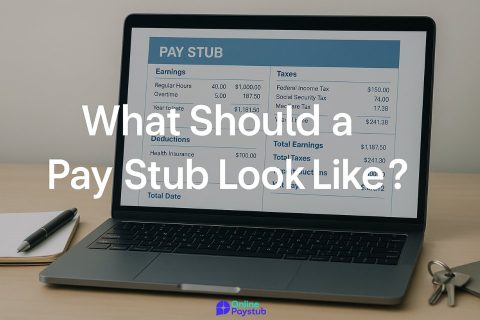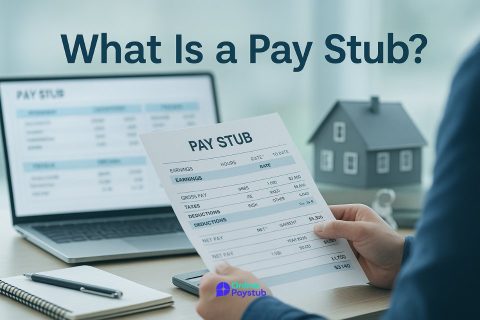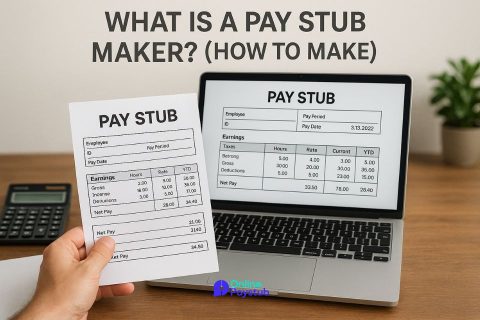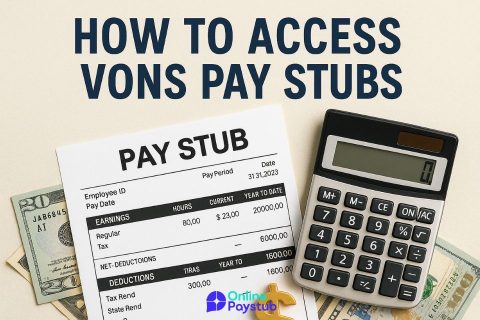Pay stubs often include a wide range of abbreviations that represent earnings, taxes, deductions, and benefits. Understanding these abbreviations is essential for employees to verify their compensation and track financial contributions over time.
Each section of a paycheck stub — from gross earnings to net pay — uses shorthand terms to fit detailed financial information into a compact space. Familiarizing yourself with these common abbreviations ensures you can confidently review your pay information and address any discrepancies promptly.
Common Pay Stub Abbreviations Explained
The earnings and tax sections of your pay stub typically contain several standard abbreviations. Here are some of the most frequently encountered:
- GROSS: Gross earnings before any deductions are applied.
- NET: Net earnings after all deductions; your take-home pay.
- YTD: Year-to-Date; cumulative totals of earnings, deductions, or taxes for the calendar year.
- FICA: Federal Insurance Contributions Act; includes Social Security and Medicare taxes.
- FED: Federal Income Tax withheld.
- STATE: State Income Tax withheld (may vary by state).
- SS: Social Security tax contribution.
- MED: Medicare tax contribution.
- VAC: Vacation pay earned or used.
- SICK: Sick leave pay earned or used.
Recognizing these abbreviations helps you better understand the components of your paycheck and verify that everything is calculated correctly.
Payroll Deduction Abbreviations You Should Know
Payroll deductions cover taxes, benefits, and other authorized withholdings. Some key deduction-related abbreviations include:
- 401K: Contributions to a 401(k) retirement savings plan.
- FSA: Flexible Spending Account deductions for healthcare or dependent care expenses.
- HSA: Health Savings Account contributions.
- DENT: Dental insurance premiums.
- VIS: Vision insurance premiums.
- LIFE: Life insurance deductions.
- GARN: Wage garnishment deductions.
- UNION: Union dues, if applicable.
- CHAR: Charitable donations withheld from paychecks.
Being familiar with these codes allows employees to better track where portions of their salary are allocated each pay period.
What Does “HOL” Mean on a Paycheck?
“HOL” typically stands for Holiday Pay on a paycheck stub. It represents compensation for recognized company holidays when employees are paid even though they may not have worked.
Key points about “HOL” on your pay stub:
- Paid Time Off: HOL earnings indicate hours or days paid for holidays without requiring work.
- Separate from Vacation Pay: Holiday pay is distinct from vacation (VAC) or sick (SICK) leave.
- May Impact Overtime Calculations: Some companies count holiday pay toward weekly hours when calculating overtime eligibility.
If you notice “HOL” on your pay stub, it means you have received compensation for a company-observed holiday during that pay period.
Decoding Your Paycheck Stub: Earnings, Taxes, and Deductions
Understanding your paycheck stub is key to managing your finances and ensuring accuracy in your compensation.
Typically, a pay stub is divided into three primary sections:
- Earnings: This section details your gross income, including regular pay, overtime, bonuses, and holiday pay (HOL).
- Taxes: Lists all tax withholdings, such as federal income tax (FED), Social Security (SS), and Medicare (MED).
- Deductions: Includes amounts withheld for benefits like health insurance (MED, DENT, VIS), retirement contributions (401K), and other voluntary deductions.
Knowing how each part connects helps you verify that your employer is processing your payroll correctly and in compliance with tax laws.
The Difference Between Gross Pay and Net Pay
Gross pay and net pay are two fundamental figures displayed on every paycheck stub:
- Gross Pay: The total earnings before any deductions are applied. It includes base salary, overtime, commissions, and bonuses.
- Net Pay: The amount you actually take home after all deductions — including taxes, insurance premiums, retirement contributions, and other withholdings — have been subtracted.
Monitoring both figures is essential for budgeting, loan applications, and financial planning.
Year-to-Date (YTD) Figures on Your Pay Stub
“YTD” stands for Year-to-Date, a cumulative total that tracks various financial components throughout the calendar year:
- YTD Earnings: Total gross income earned to date.
- YTD Deductions: Total amount withheld for taxes and benefits so far.
- YTD Taxes: Running total of all taxes withheld, including federal, state, and Social Security.
Reviewing YTD information helps you anticipate your total taxable income and prepare for tax season or major financial decisions.
What Each Section of Your Pay Stub Represents
Your paycheck stub typically contains the following core sections:
- Employee Information: Name, employee ID, department, and work location.
- Pay Period Details: Start and end dates for the earnings period.
- Earnings Summary: Breakdown of gross pay, including overtime and bonuses.
- Deductions and Taxes: All withholdings such as FICA taxes, 401K contributions, and insurance premiums.
- Net Pay: The final take-home amount after deductions.
- YTD Summaries: Cumulative totals for earnings, taxes, and deductions.
Each section provides critical financial data that helps you maintain accurate personal and tax records.
Social Security and Federal Tax Codes on Pay Stubs
Two major components on every paycheck stub are Social Security and federal tax withholdings:
- Social Security (SS): A mandatory payroll tax under FICA that funds retirement and disability benefits.
- Federal Tax (FED): Withholding based on your W-4 elections, used to prepay your federal income taxes.
These amounts are calculated based on your earnings and withholding choices. Reviewing these deductions ensures that the correct amounts are being withheld, helping avoid surprises during tax filing.
Flexible Spending Account (FSA) Details on Pay Stubs
If you participate in a Flexible Spending Account (FSA), you’ll notice corresponding entries on your pay stub:
- FSA Health Care: Deductions for out-of-pocket medical expenses.
- FSA Dependent Care: Contributions for child or elder care expenses.
FSA contributions are pre-tax, reducing your taxable income. It’s important to track your FSA deductions to ensure they align with your elected amounts and to plan for eligible reimbursements before the plan year ends.
How to Read and Understand Your Full Paycheck Stub
To effectively read your paycheck stub:
- Start with Gross Pay: Verify your total earnings before deductions.
- Review Deductions: Confirm taxes, benefits, and voluntary deductions are accurate.
- Check Net Pay: Ensure your final take-home matches your expectations.
- Analyze YTD Totals: Monitor your cumulative earnings and withholdings.
- Look for Anomalies: Identify missing hours, unexpected deductions, or miscalculations.
Developing a habit of reviewing each pay stub empowers you to detect errors early and maintain better control over your financial wellbeing.




No comments to show.